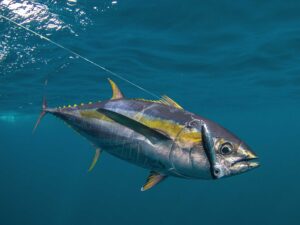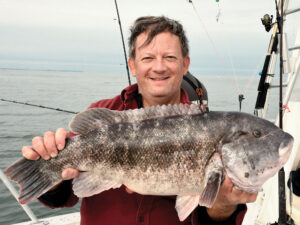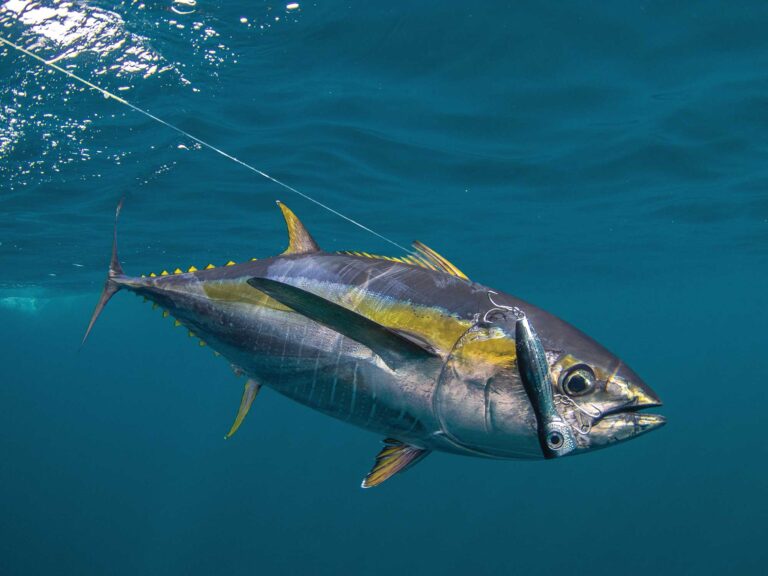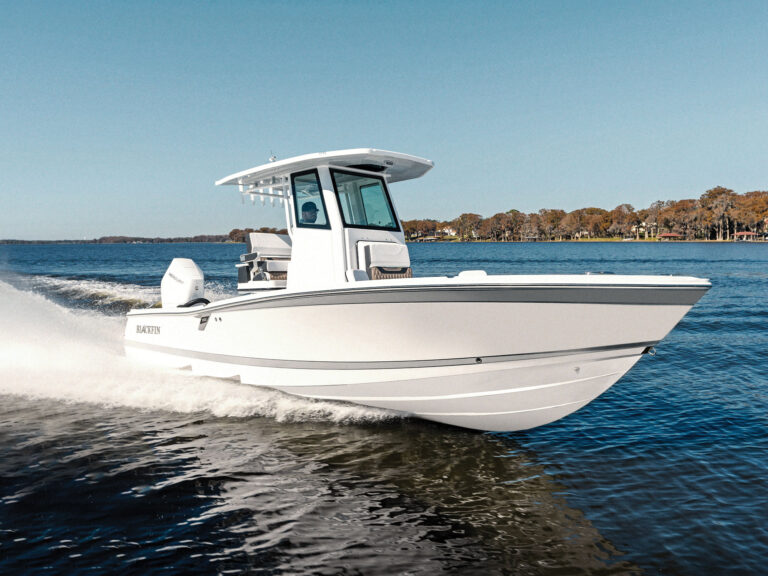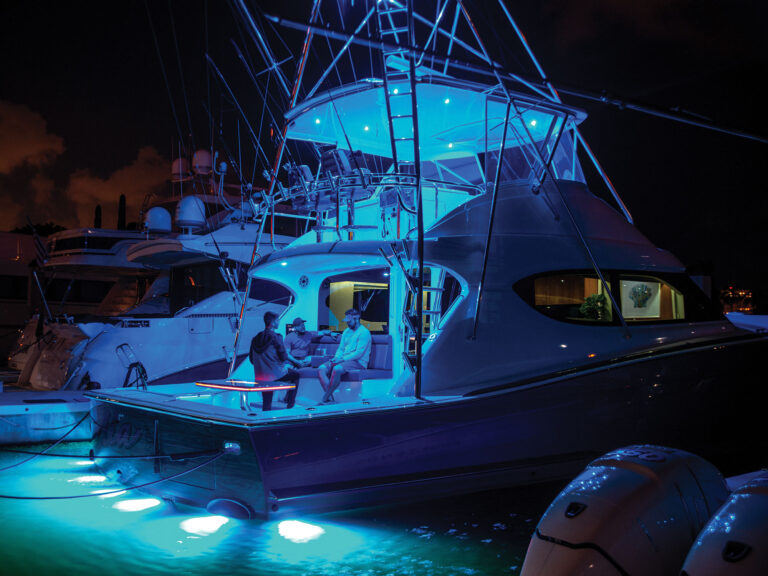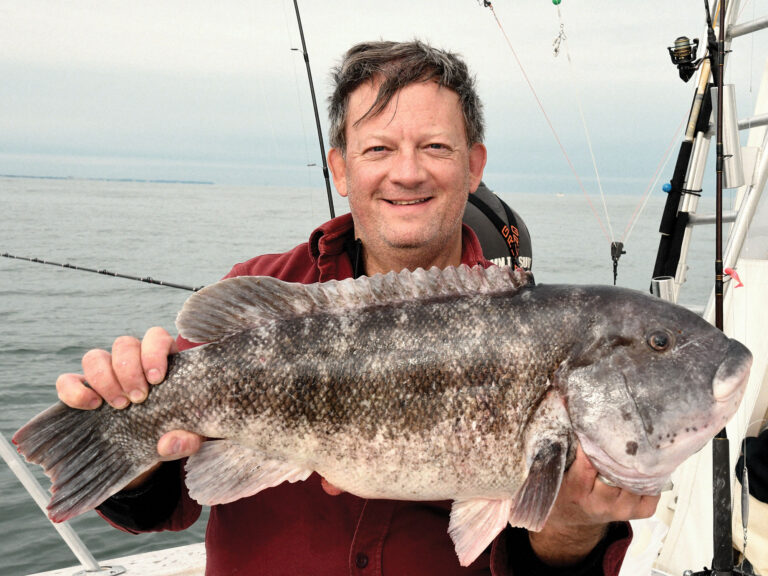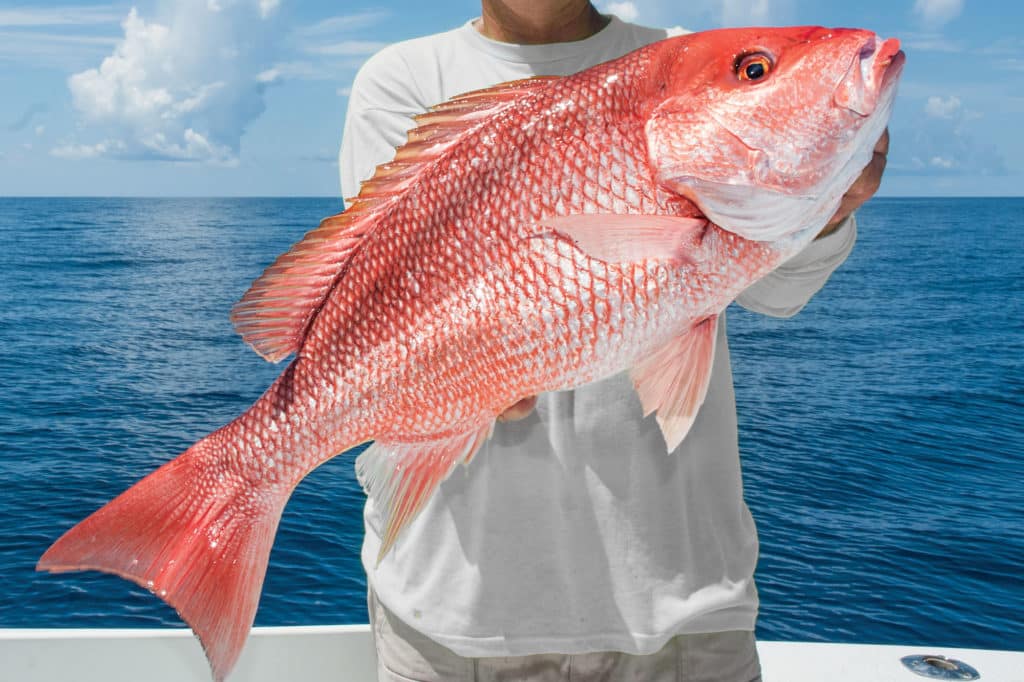
Want to experience great red snapper action? Then red snapper fishing in Texas is a great option. From the middle coast to the Mexican border, the snapper fishing is some of the best in the entire Gulf. During the cooler months, not only is the number of fish unbelievable, but the boats targeting them are few and far between. The best time to catch red snapper in Texas might be the coldest months of the year.
While red snapper season may be closed in federal waters, the fishery remains open year-round in Texas state waters, which extend 9 nautical miles out. From about Freeport south to Port Mansfield, winter weather is mild — temperatures range from 80 to 60 degrees — and the snapper remain active until the water chills below 60, which doesn’t happen very often.
I’ve seen some incredible red snapper catches in Texas waters. I’ve learned you don’t normally find many in depths of less than 30 or 40 feet, so the key is to fish where there’s quick access to deep water. On the Texas-Louisiana border you have to run 30 miles or more to hit water deep enough to hold red snapper, but travel a couple of hours down the coast and things improve drastically.
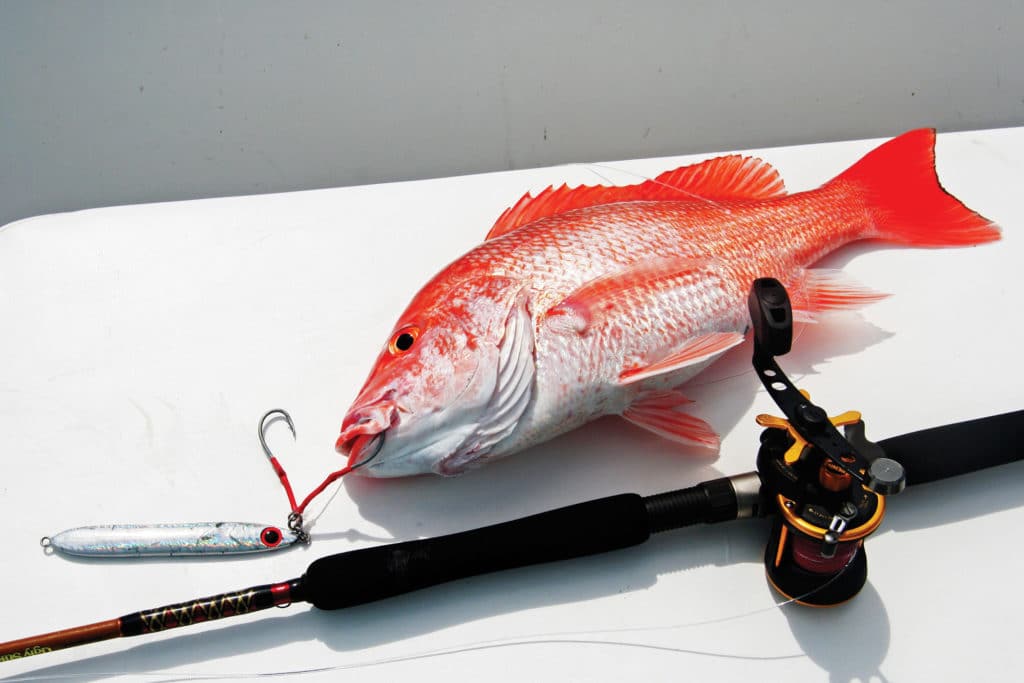
Where to Catch Red Snapper in Texas
Port Mansfield, located at the midpoint of Laguna Madre in South Texas, is one of my favorite departure points for winter red snapper fishing. A 9-mile run past the Mansfield jetties puts me in open water, and from there I head north to fish rocks, wrecks and reefs loaded with hungry red snapper.
Capt. Chad Kinney, who owns and operates Bamm Bamm Charters, has been fishing this area of the Texas coast for over 30 years. “When it comes to catching winter snapper, this is the place,” Kinney says. “We catch giants during the winter. I’ve got a photo of some folks on a charter last November with six huge snappers, the heaviest of which weighed 25 pounds.”
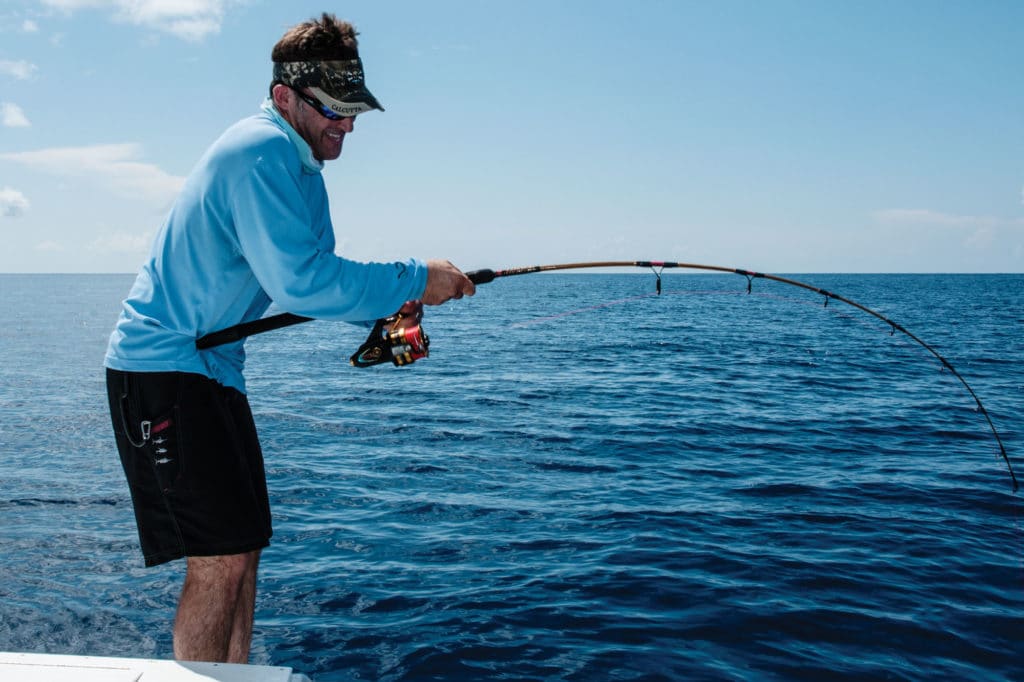
The rocks along the beach north of the Mansfield jetties are well-known for holding big-time numbers of snapper throughout the year. They are scattered across a 17-mile stretch, from one to several miles offshore. A particularly productive group of rocks sits 9 to 12 miles east of the Mansfield jetties. One isolated set called the North Rocks extends about 12 miles from the beach and holds a lot of snapper. Those rocks are living coral formations and they attract lots of marine life, which in turn draws predators like snapper, cobia, kingfish, bonito, mackerel, sharks and the occasional grouper.
Unlike the upper Texas coast, down south the bottom drops quickly — in some areas you are in 40 feet of water just a few miles out — and not many people target snapper. In fact, it’s rare to see more than a couple of boats working the rocks on any given day, especially from October through April. A few charter captains, like Kinney, cash in. “We fish the rocks a lot, but another good area is a manmade reef 7 miles off the jetties,” he explains. “It’s in about 65 feet of water, is made out of culverts and includes a sunken tugboat. We anchor or drift-fish over all that bottom structure year-round.”
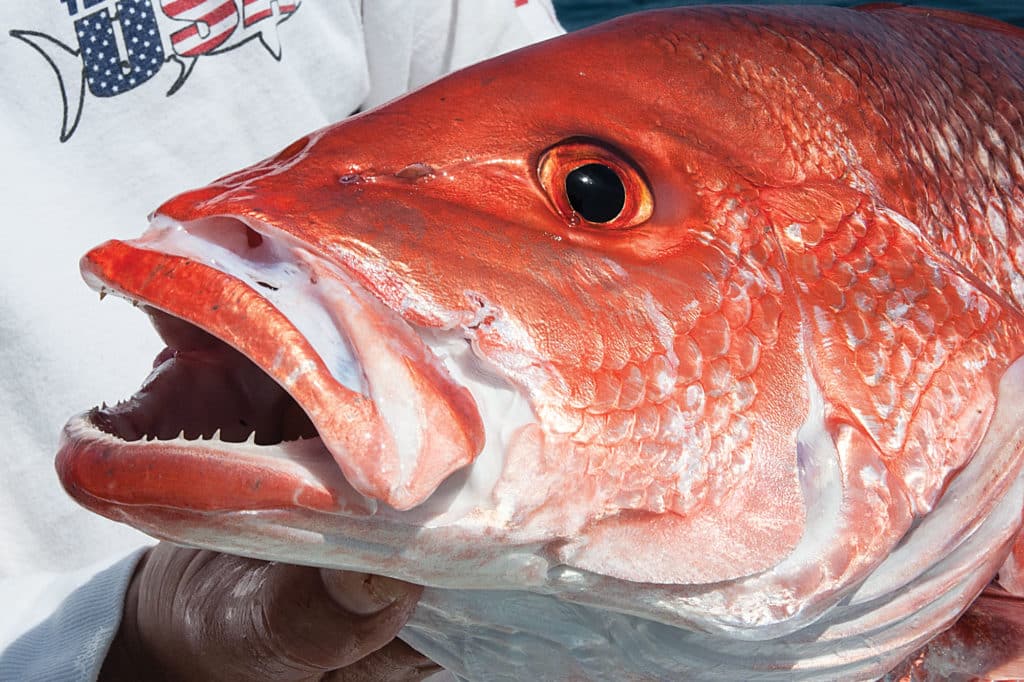
Central Coast
Port O’Connor, on the middle Texas coast, is a sleepy little town during the week, but on weekends fishermen swarm the area to catch speckled trout, redfish and red snapper. A set of oil- and gas-production rigs that you can barely see off the Port O’Connor jetties is a popular winter hot spot for snapper. The rigs lie within state waters and hold lots of fish. A sunken ship about 7 miles due east of the jetties, another known producer, sits in 60 to 70 feet of water, about 8 miles out.
Capt. Dodd Coffey has been fishing out of Port O’Connor over five decades, and he’s spent much of that time catching winter snapper from nearshore structure. “We don’t have the rocks that you’ll find down south, but we’ve got rigs and wrecks within state waters that hold winter snapper,” Coffey says. “We catch snapper year-round, but during the winter months the heavier fish move in.”
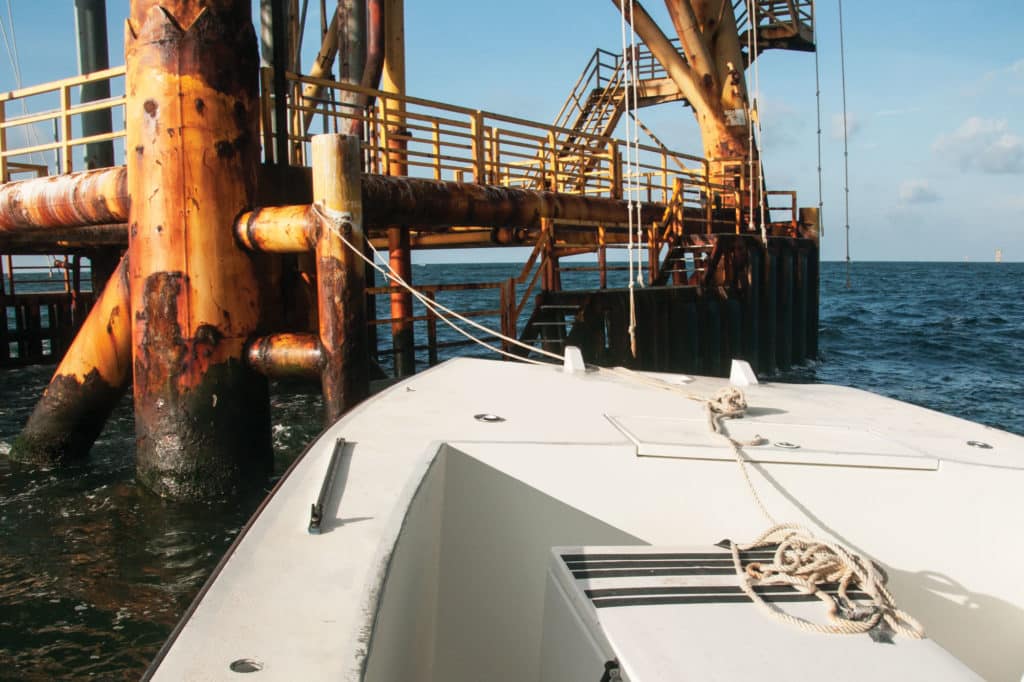
Fishing Structure for Red Snapper
Fishing the rocks out of Port Mansfield is not always a cakewalk. Current can be a factor and makes anchoring a real chore. Try to anchor so that your boat holds over the rocks, which allows you to fish jigs and other lures vertically over the structure. When fishing the reefs, you have the option to drift or anchor. It’s a good idea to drift until you find the snapper, then drop anchor to hold over the fish.
To fish the rigs out of Port O’Connor, sometimes it’s best to drift well down-current of a rig using jigs tipped with whole sardines or pogies. However, since snapper tend to hang tight to the rig substructure in about 60 feet, it’s generally better to use a rig hook to hold the boat in position, just down-current of the structure.
Of course, chumming is always an option when fishing nearshore structure. Because the water is relatively shallow, snapper don’t hesitate to come to the surface to feed on the chum. I seem to do best with 1-inch pieces of diced pogies or Spanish sardines. Once you have snapper on the surface, sight-cast to them in the clear water with light jigs tipped with a piece of peeled shrimp or squid. One great red snapper rig is a jig tipped with natural bait.
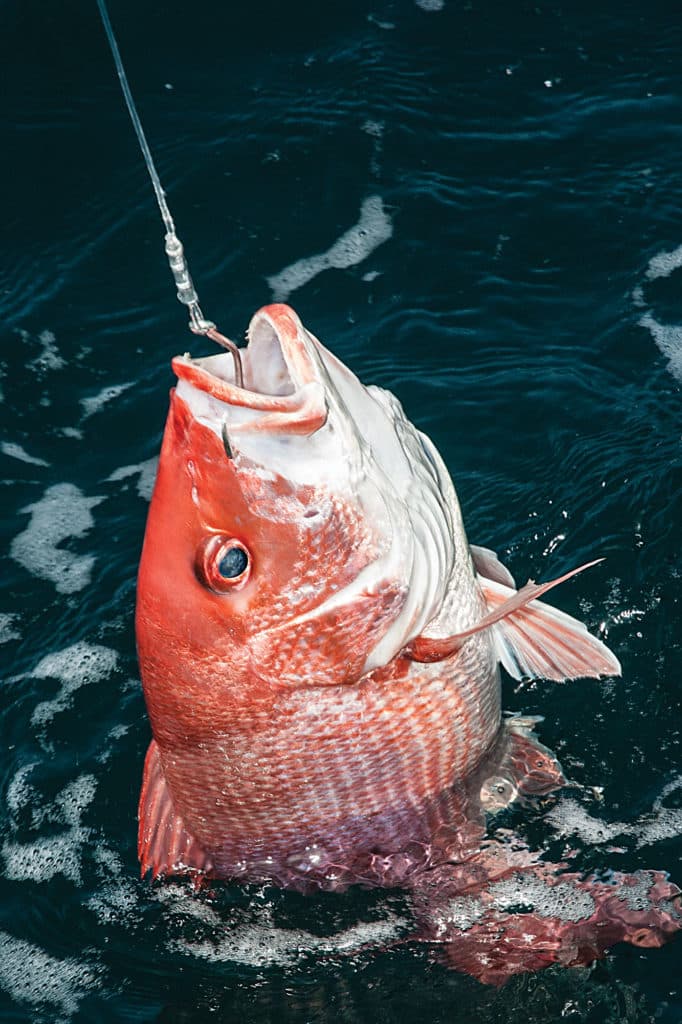
Fishing Artificial Reefs for Red Snapper
Thanks to the Coastal Conservation Association (CCA) and the Texas Parks and Wildlife Department (TPWD), the Lone Star state has a great reef-building program. Nearshore and public reefing efforts began in 2006 and established a 160-acre reef site off each major port. The program has lots of reef sites in the Gulf of Mexico, including nearshore sites at Port Isabel, Corpus Christi, Port Aransas, Matagorda and Freeport.
For a current map of reefs along the Texas coast, their GPS coordinates and distance from the nearest port, visit tpwd.texas.gov/gis/ris/artificialreefs.
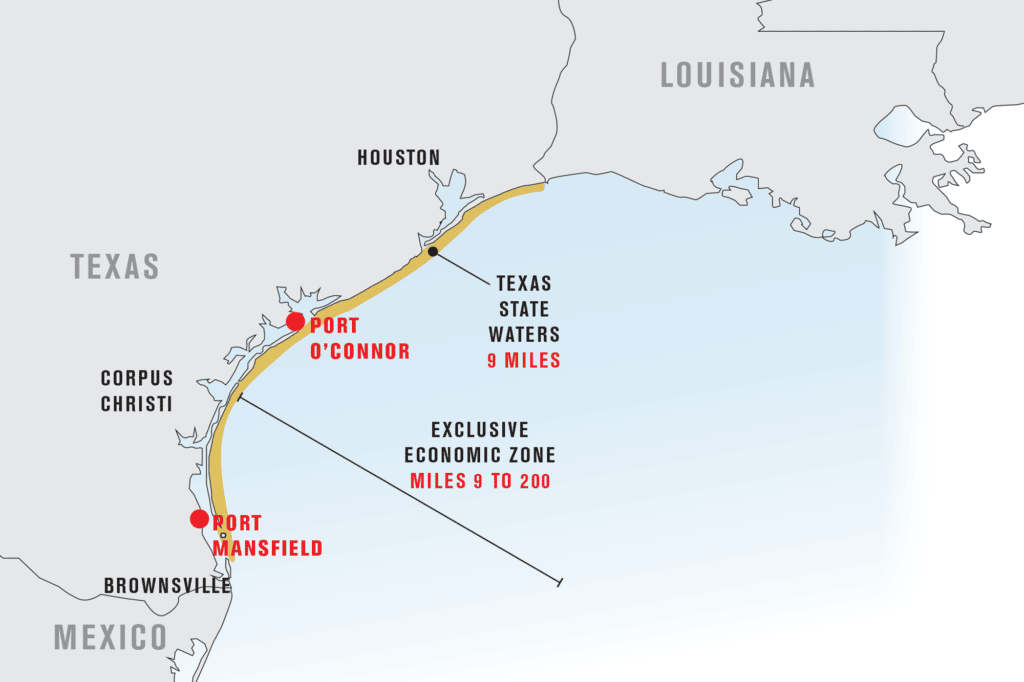
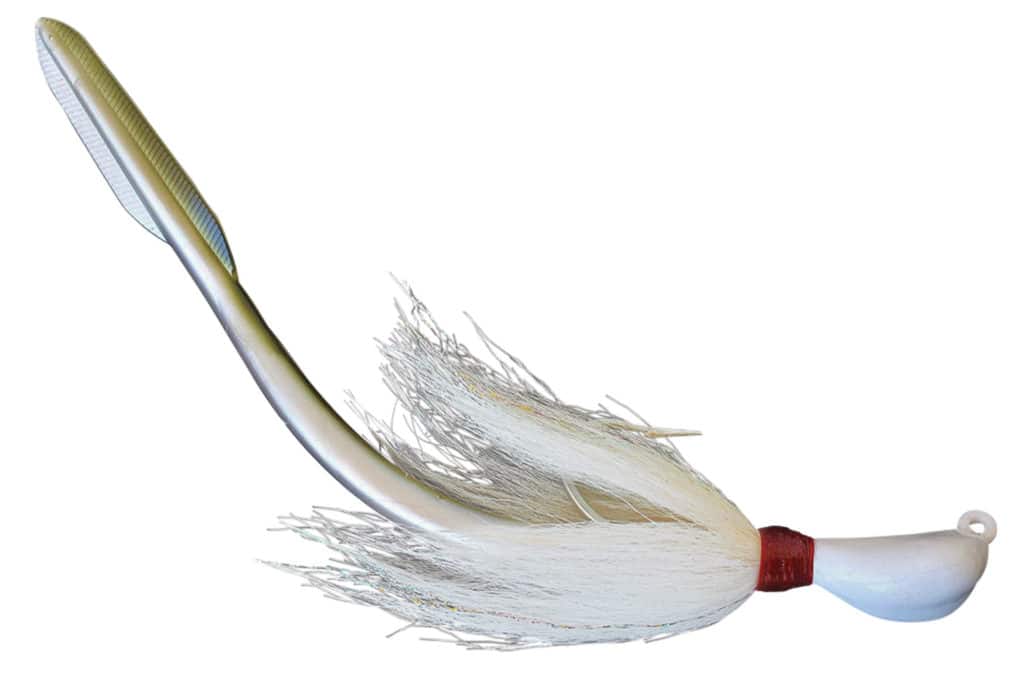
Texas Red Snapper Tackle
- Rods: 6-foot Offshore Angler Power Stick conventional or spinning for 1½- to 2-ounce lures
- Reels: Offshore Angler Revolution bait-casting or Sea Lion spinning, or equivalent 30-pound-class reels
- Line: Offshore Angler Magibraid Spectra, 30- to 40-pound, or equivalent braided line
- Lures: 5-inch Egret Wedgetail in black-mullet or Pink-Pop color schemes on a ½-ounce jig head; Berkley Gulp! Swimming Mullet in chartreuse or pearl white; Bomber 1½-ounce Jig-N-Eel in white or yellow
- Baits: Squid, live or dead shrimp, live piggy perch, Spanish sardines and pogies



